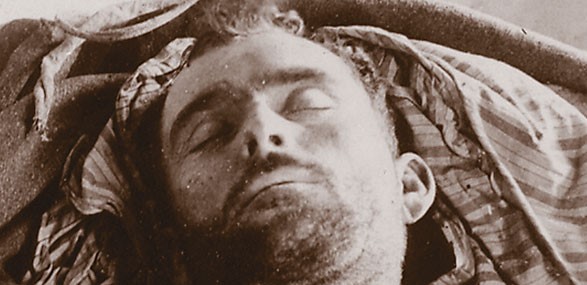Back in the 19th century, when photography was young, post-mortem images of dead loved ones was fashionable as a way to remember the deceased. But it also became a way to calm the citizenry’s fears about outlaws, highwaymen, and brigands of all kinds when news of their deaths came. They wanted proof. The truest kind of true crime. (And they wanted to post brutal reminders of the price to be paid for breaking the law.) Affectionate post-mortem photography died out (no pun intended) but for more than 100 years, we’ve been taking dead outlaws’ pictures. Here are a few:
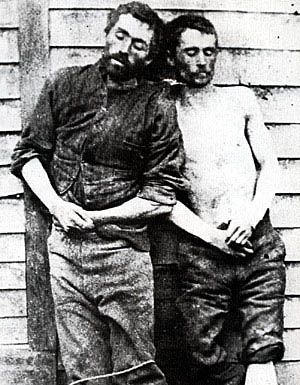
10. A WARNING TO OUTLAWS
These two unfortunate badmen’s names are lost to history, but their corpses were propped up and photographed, mostly as a grisly admonition to other Old West bandits and desperadoes about how swift (and embarrassing) justice might be if they came to the wrong town. It was a popular form of retribution in the 19th century, when there was less fondness for due process. The dead crooks were often posed seated or standing, like these guys, who appear to be napping … but they’re not.
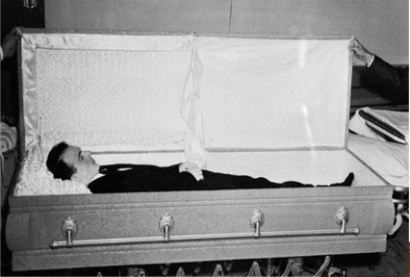
9. ASSASSINATED ASSASSIN
On November 22, 1963, Lee Harvey Oswald murdered President John F. Kennedy in Dallas. Two days later, Oswald himself was assassinated by an angry Jack Ruby. Oswald had a proper, if sparsely attended, burial in Fort Worth (shown here). But amid conspiracy theories about doppelganger Soviet spies, he was exhumed 18 years later to make sure Oswald was really buried in Oswald’s grave.
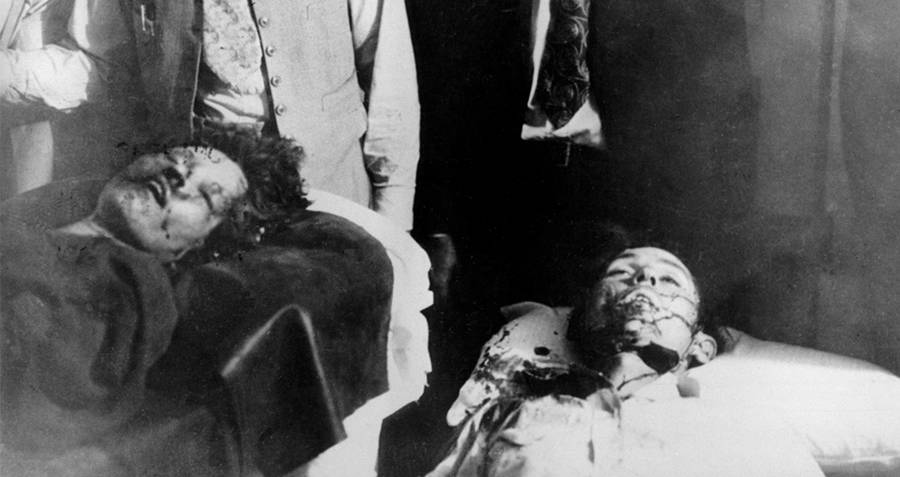
8. WENT DOWN TOGETHER
Bonnie Parker and Clyde Barrow were the epitome of outlaw romance in Depression-era America. They weren’t especially skilled robbers, but they had a murderous streak. So in May 1934, lawmen under the command of Texas Ranger Frank Hamer took no chances when they ambushed the couple on a Louisiana back road and killed them in a barrage of bullets. They were each hit up to 50 times, rendering them almost unrecognizable in this photo.
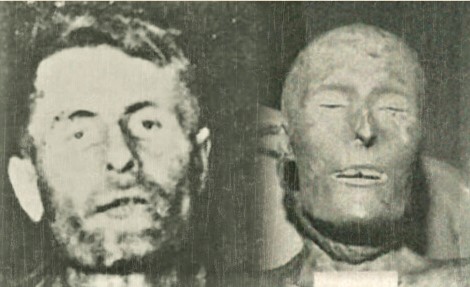
7. FUN HOUSE CORPSE
Elmer McCurdy was a two-bit outlaw, a wannabe desperado who overshot the Wild West and landed in the 20th century. In 1911, Elmer was killed by a posse after an Oklahoma train robbery. His body sat at the mortuary until a couple of his outlaw buddies claimed him—then sold him to a carnival. Eventually, he disappeared … until the 1970s, when his mummified corpse was found in a California amusement park. Elmer was reburied in Oklahoma, with two tons of concrete over his casket so he wouldn’t go missing again.
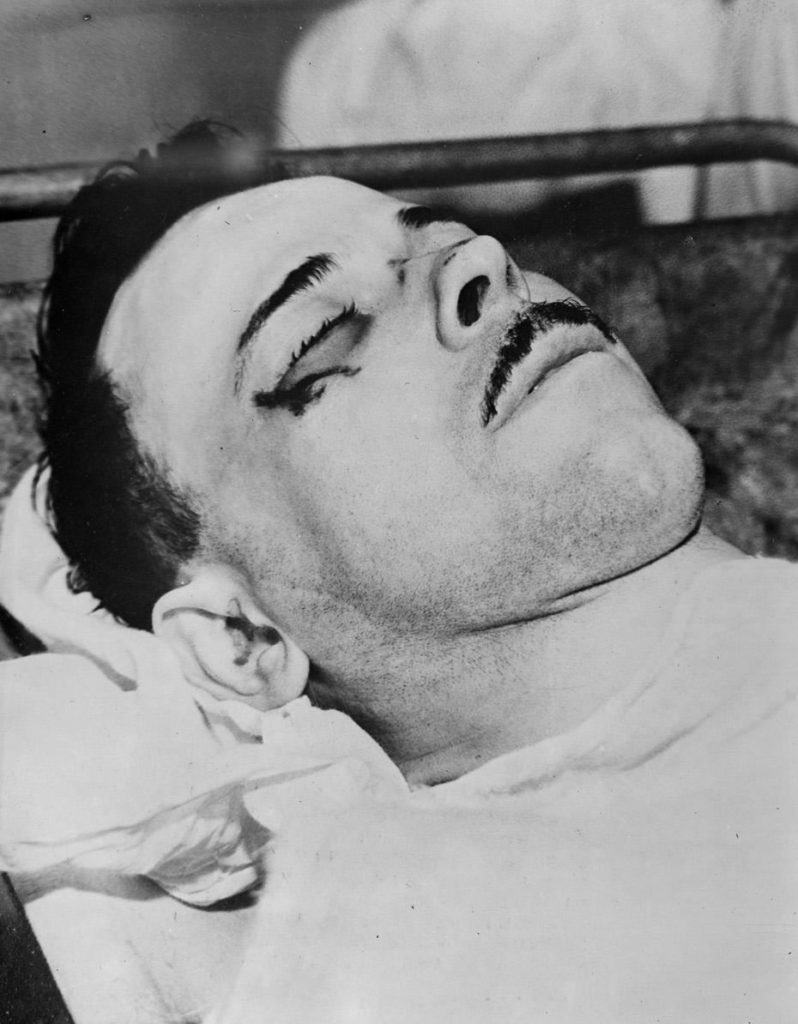
6. G-MEN GET GANGSTER
John Dillinger was one of the most recognizable robbers of the Depression (along with Bonnie and Clyde, Babyface Nelson, Pretty Boy Floyd, and others). Capturing or killing him was a priority for FBI Director J. Edgar Hoover, but Dillinger remained elusive, partly because even lawmen were star-struck by him. But on a muggy July night in 1934—less than two months after Bonnie and Clyde were gunned down—Dillinger ran when an FBI agent approached him outside a Chicago theater. He was shot to death. In the morgue, he was a star. Various gawkers filed past his corpse, including a troupe of swimsuit-clad showgirls who giggled over his body.
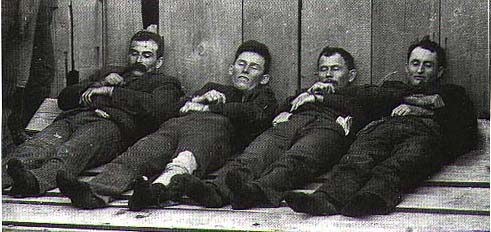
5. DALTONS DISSOLVED
What set the Dalton Gang apart was that three of its members were brothers. All had transitioned from deputies to outlaws because crime paid better. They were known as train and bank robbers briefly in the 1890s. In a lightning raid on the bank in Coffeyville KS, it became apparent the townsfolk were better prepared for the Daltons than expected. Two Dalton brothers—Bob and Grat—were killed with a couple other gang members (shown here); third brother Emmett was captured and went to prison. As was the habit of the time, the dead were laid out for a photographer … and Coffeyville had no more bank robberies.
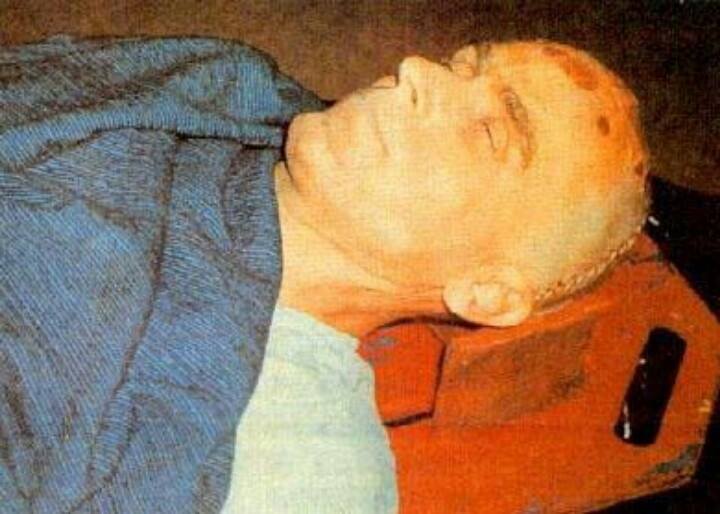
4. TED BUNDY EXECUTED
Theodore Bundy is known today as one of America’s scariest, if not most prolific, serial killers. He described himself as “the most cold-hearted son of a bitch you’ll ever meet.” That might be true: Before Florida executed him in 1989 in its electric chair, he confessed to 30 homicides in seven states between 1974 and 1978. To this day, cops think it was likely more. He didn’t eat his last meal of steak, eggs, toast, and hash browns, and he spoke to a couple clergymen. His last words were spoken to his lawyers before 2,000 volts of electricity killed him.
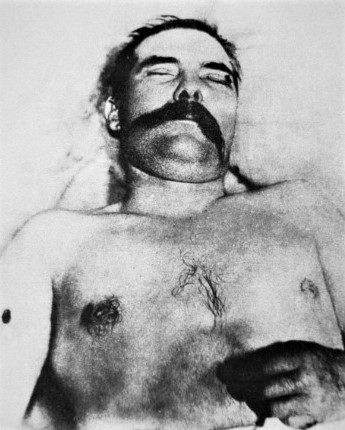
3. A KILLER KILLED
Few Old West outlaws rival the pure violence of John Wesley Hardin (1853-1895), probably Texas’ most notable Old West gunslinger. He killed more than 40 people, although he proclaimed all his life that he never killed anyone that didn’t need killing. A local lawman in El Paso TX shot Hardin while the shootist played poker. Some say Hardin’s last words were, “Four sixes to beat, Henry.” His funeral cost $77.50. Repeated thefts of Hardin’s headstones caused the cemetery to erect a locked fence around his grave and encase him under four inches of concrete.
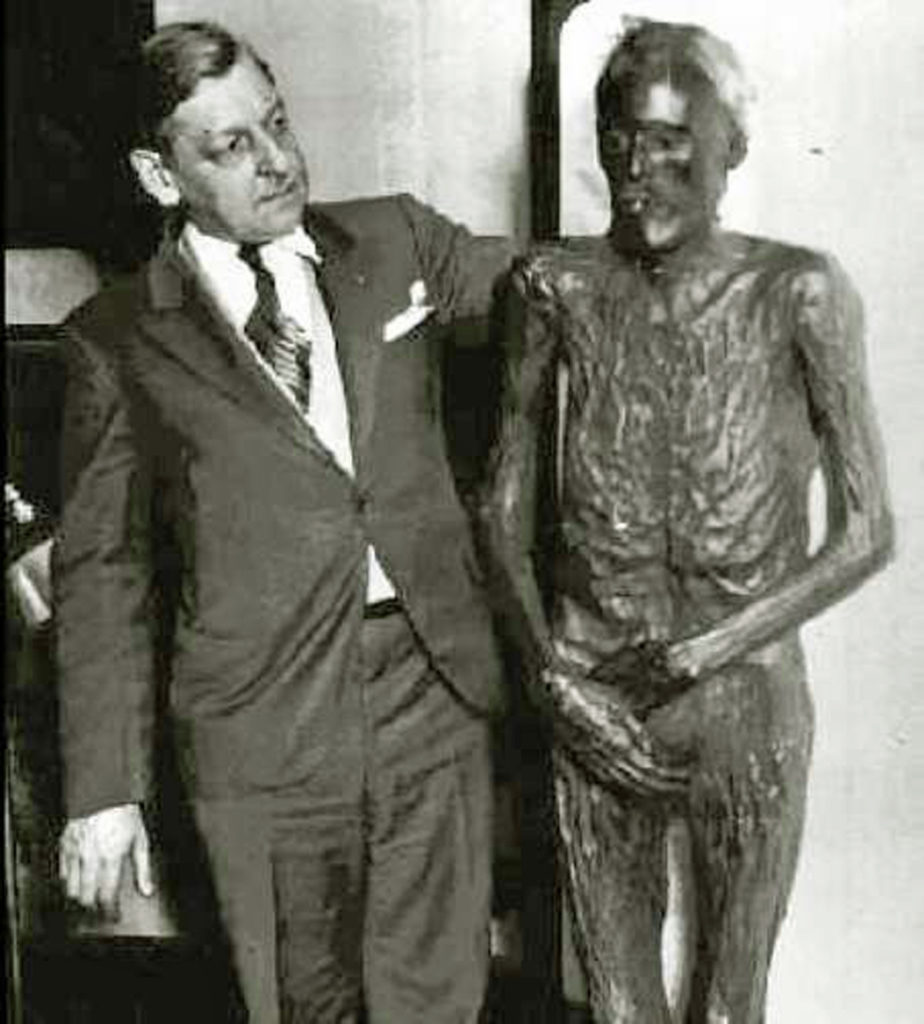
2. BOOTH’S MUMMY?
In 1870, five years after the Lincoln assassination, a young man named John St. Helen settled in Texas. He became a bartender and acted in the local theater. In time, he told a local lawyer that he was, in fact, Lincoln assassin John Wilkes Booth, who survived his own deadly arrest in a case of mistaken identity. Eventually, he left town and disappeared—until a housepainter named David George committed suicide in Enid OK in 1903. It was the bartender from Texas, and he’d told a local widow his same Booth story. His corpse was mummified and displayed in the undertaker’s front window until that old lawyer friend claimed the body, which he eventually sold into the carnival circuit. An 1931 X-ray examination reportedly found circumstantial evidence that it was, indeed, Booth. After decades on the midway, the mummy disappeared in the 1970s and has never resurfaced.
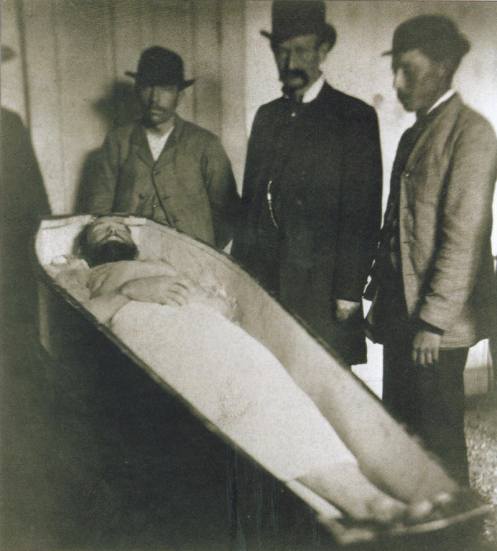
1. JESSE’S LAST PICTURE
He was one of the most famous outlaws of the 19th century, but he met his end while straightening a picture on the wall of his Missouri home. His killer was a supposed friend who had several motives for the assassination, chiefly the reward money. But before that, Jesse James had been romanticized in the pulp magazines of his time as a kind of Robin Hood, although he was really a cold-blooded killer. Nevertheless, Jesse was still young when he was killed, and it was big news in those days. His admiring epitaph reads: “Jesse W. James, Died April 3, 1882, Aged 34 years, 6 months, 28 days, Murdered by a traitor and a coward whose name is not worthy to appear here.”
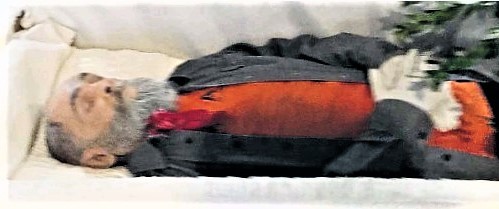
BONUS: CHARLES MANSON … FINALLY
You already know the whole sordid story about Charlie and his Family. He was laid out for a proper funeral viewing, but his body was cremated soon after. His ashes were scattered over the Gulf of Mexico.
~~~~~~~
Bestselling crime writer Ron Franscell is author of the popular Crime Buff’s Guides, which explore the crime histories of various places like Texas, Los Angeles, Arizona, Washington DC, Colorado, and Pennsylvania. COVER IMAGE: Wild Bunch’s Will “News” Carver, shot dead in Sonora TX in 1901.
Can’t get enough of Ron’s “Incredible 10” lists?
Browse some of the previous blogs here:
◙ 10 Los Angeles Crime Facts You Didn’t Know
◙ 10 Creepy Places Right Next Door
◙ 10 Mug Shot Tips for Your Next Arrest
◙ 10 Crime Myths You Probably Believe
◙ 10 Texas Crime Facts You Didn’t Know
◙ 15 Places for Writers to Retire
◙10 Wyoming Crime Facts You Didn’t Know
◙10 Songs for Every Writer’s Playlist
